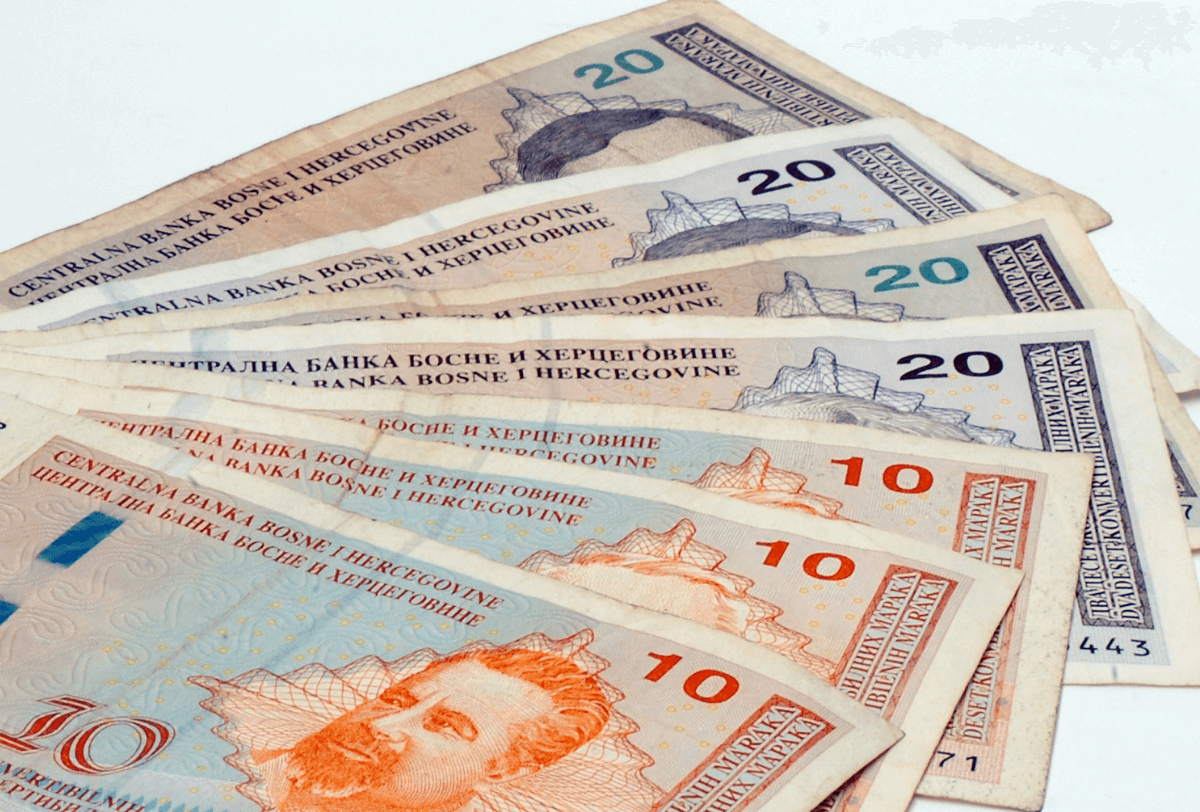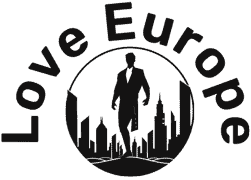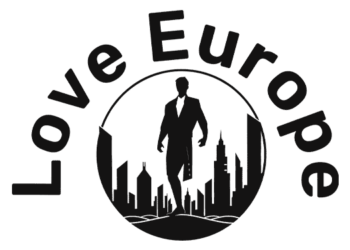The official currency of Bosnia and Herzegovina is the Convertible Mark (Konvertibilna marka in Bosnian), commonly abbreviated as BAM or KM. Introduced in 1998, the Convertible Mark replaced the Bosnia and Herzegovina dinar and has since served as the country’s primary medium of exchange. This currency plays a crucial role in the nation’s economy, facilitating both domestic and international transactions.
Historical Context and Pegging
The Convertible Mark was established as part of the Dayton Agreement, which ended the Bosnian War. Initially, it was pegged to the German Deutsche Mark at a 1:1 ratio. However, with the introduction of the Euro in 2002, the Convertible Mark’s peg shifted to the Euro at a fixed rate of 1 EUR = 1.95583 BAM. This pegging system has helped maintain stability in Bosnia and Herzegovina’s currency, providing a sense of security for both local citizens and foreign investors.
Denominations and Design
The Convertible Mark is available in both coins and banknotes. Coins come in denominations of 5, 10, 20, and 50 feninga (cents), as well as 1 and 2 marks. Banknotes are issued in 10, 20, 50, 100, and 200 mark denominations. The design of the currency reflects the country’s rich cultural heritage and diverse ethnic makeup, featuring prominent historical figures and landmarks from different regions of Bosnia and Herzegovina.
Usage and Acceptance
While the Convertible Mark is the official currency, it’s worth noting that some businesses, particularly in tourist areas, may accept euros. However, it’s always advisable to have local currency on hand for everyday transactions. ATMs are widely available in urban areas, and major credit cards are generally accepted in hotels, restaurants, and larger shops. When traveling to Bosnia and Herzegovina, it’s recommended to exchange currency at official banks or authorized exchange offices to ensure fair rates and avoid potential scams.
History of the Convertible Mark
The Convertible Mark (KM) was introduced as the official currency of Bosnia and Herzegovina on June 22, 1998. This new currency replaced the Bosnia and Herzegovina dinar, which had been in circulation since 1992. The establishment of the Convertible Mark was a crucial step in the country’s economic stabilization following the Bosnian War (1992-1995).
Pegging to the Deutsche Mark
Initially, the Convertible Mark was pegged to the Deutsche Mark at a 1:1 ratio. This decision was made to instill confidence in the new currency and provide stability to the post-war economy. The peg to the Deutsche Mark was maintained until January 1, 2002, when Germany, along with several other European countries, adopted the Euro.
Transition to Euro Peg
Following the introduction of the Euro, the Convertible Mark’s peg was smoothly transitioned to the new European currency. The exchange rate was set at 1 euro to 1.95583 Convertible Marks, which was the exact conversion rate between the Deutsche Mark and the Euro. This transition ensured continuity and stability in Bosnia and Herzegovina’s monetary policy.
Impact on the Economy
The introduction of the Convertible Mark and its pegging to strong currencies has played a significant role in Bosnia and Herzegovina’s economic recovery and development. It has helped to control inflation, stabilize prices, and facilitate international trade. The currency’s stability has also contributed to increased foreign investment and improved economic integration with the European Union.
Over the years, the Convertible Mark has remained a symbol of Bosnia and Herzegovina’s economic progress and its aspirations for closer ties with the European Union. As the country continues to develop and work towards potential EU membership, the Convertible Mark stands as a testament to the nation’s resilience and determination to build a stable and prosperous economy.
Bosnia and Herzegovina Currency Before the Convertible Mark
Before the introduction of the Convertible Mark, Bosnia and Herzegovina used the Yugoslav dinar as its official currency. This was a legacy of the country’s time as part of the Socialist Federal Republic of Yugoslavia. The Yugoslav dinar served as the primary medium of exchange, unit of account, and store of value for Bosnian citizens and businesses throughout the late 20th century.
Hyperinflation and Currency Instability
In the early 1990s, as Yugoslavia began to disintegrate, the Yugoslav dinar experienced severe hyperinflation. This economic crisis had a profound impact on Bosnia and Herzegovina, leading to a rapid devaluation of the currency and economic instability. Citizens struggled with skyrocketing prices and the erosion of their savings, while businesses faced significant challenges in conducting day-to-day operations.
Transition Currencies
Following the Bosnian War (1992-1995) and the country’s independence, Bosnia and Herzegovina faced the challenge of establishing a stable currency system. During this transitional period, several interim currencies were used in different parts of the country. The Bosnian dinar was introduced in the Federation of Bosnia and Herzegovina, while the Republika Srpska used the Republika Srpska dinar. These parallel currency systems reflected the complex political and economic landscape of the post-war period.
The Need for Monetary Reform
The use of multiple currencies within Bosnia and Herzegovina created economic inefficiencies and hindered the country’s integration and recovery efforts. It became increasingly clear that a unified, stable currency was necessary to promote economic growth, facilitate trade, and attract foreign investment. This realization set the stage for the introduction of the Convertible Mark, which would eventually become the country’s official currency and play a crucial role in Bosnia and Herzegovina’s economic stabilization and development.
Design and Denominations of Bosnia and Herzegovina Banknotes

The banknotes of Bosnia and Herzegovina, known as the convertible mark, showcase a blend of cultural heritage and modern security features. Each denomination displays unique artistic themes that reflect the country’s rich history and diverse landscapes. The front sides typically feature portraits of notable Bosnian figures, while the reverse sides depict architectural landmarks or natural scenery.
Security elements are seamlessly integrated into the designs, including watermarks, security threads, and color-shifting ink. These features not only protect against counterfeiting but also add to the visual appeal of the currency. The convertible mark is available in several denominations (10KM, 20 KM, 100 KM, and 200 KM) each with its distinct color scheme.
These vibrant colors aid in quick identification and contribute to the overall aesthetic of the Bosnia and Herzegovina currency. The size of the banknotes increases slightly with higher denominations, providing an additional tactile differentiation.
Symbolic Imagery and Cultural Representation
Each banknote in the Bosnia and Herzegovina currency series tells a story through its imagery. For instance, the 20 KM note features Antun Branko Šimić, a renowned Bosnian poet, on the front, while the back showcases the Old Bridge in Mostar, a UNESCO World Heritage site. This thoughtful design approach not only serves as a medium of exchange but also as a miniature canvas celebrating the nation’s cultural and historical legacy.
The intricate details on these banknotes, from the microprinting to the raised ink, demonstrate the craftsmanship involved in their production. These elements combine to create a currency that is both functional and a source of national pride for Bosnia and Herzegovina.
Coins of the Convertible Mark

The Convertible Mark, Bosnia and Herzegovina’s official currency, is divided into 100 fenings. Coins in circulation come in denominations of 5, 10, 20, and 50 fenings, as well as 1 and 2 marks. Each coin features unique designs that reflect the country’s rich cultural heritage and natural beauty.
The 5, 10, and 20 fening coins are made of copper-plated steel, giving them a distinctive reddish hue. The 5 fening coin displays a stylized fleur-de-lis, while the 10 and 20 fening coins feature the coat of arms of Bosnia and Herzegovina. These smaller denominations are lightweight and perfect for small transactions.
Larger denominations, including the 50 fening and 1 mark coins, are composed of nickel-plated steel. The 50 fening coin showcases a golden lily, a symbol deeply rooted in Bosnian history. The 1 mark coin, slightly larger and heavier, depicts the map of Bosnia and Herzegovina on its reverse side.
The 2 mark coin, the highest denomination, is bi-metallic. It features a nickel-brass ring with a copper-nickel center, making it easily distinguishable from other coins. The reverse side of this coin displays the national coat of arms, emphasizing its importance in daily transactions.
The Central Bank of Bosnia and Herzegovina is responsible for minting and circulating these coins. They work diligently to ensure an adequate supply of coins in the market, balancing the needs of consumers and businesses. The bank also implements strict quality control measures to maintain the integrity and durability of the coins.
Interestingly, while all denominations are still legal tender, the 5 and 10 fening coins are rarely used in everyday transactions due to their low value. However, they remain an important part of Bosnia and Herzegovina’s numismatic history and are sought after by coin collectors worldwide.
Exchange Rates and Currency Conversion in Bosnia and Herzegovina
Understanding the exchange rates for the Bosnia and Herzegovina Currency is crucial for travelers and investors alike. As of 2024, the Bosnian Convertible Mark (BAM) maintains a fixed exchange rate with the Euro (EUR) at approximately 1 EUR = 1.95583 BAM. This pegged rate provides stability and predictability for currency conversions involving the BAM.
For other major currencies, exchange rates may fluctuate. It’s advisable to check current rates with reliable financial institutions or online currency converters for the most up-to-date information when planning your transactions.
Currency Conversion Tips
When converting your home currency to the Bosnia and Herzegovina Currency, keep these points in mind:
Banks and official exchange offices typically offer the best rates.
Avoid exchanging large sums at airports or hotels, where rates are often less favorable.
Consider using ATMs for withdrawing BAM, as they usually provide competitive rates.
Be aware of any fees your bank may charge for international transactions.
It’s wise to inform your bank of your travel plans to ensure smooth transactions while in Bosnia and Herzegovina.
Digital Conversion Tools
In 2024, numerous smartphone apps and websites offer real-time currency conversion for the Bosnia and Herzegovina Currency. These tools can be invaluable for quick calculations on the go. Popular options include XE Currency, Google Currency Converter, and TransferWise.
Remember that while these digital tools are convenient, they may not always reflect the exact rates you’ll receive at physical exchange locations. It’s best to use them as a general guide and verify rates before making significant transactions.
By staying informed about current exchange rates and utilizing smart conversion strategies, you can maximize the value of your money when dealing with the Bosnia and Herzegovina Currency in 2024.
Frequently Asked Questions
These are some frequently asked questions and answers about Bosnia and Herzegovina Currency.
Can I use Euros in Bosnia and Herzegovina?
While the Euro is not the official currency, it is widely accepted in many tourist areas and larger establishments. However, it’s always best to use the local currency, the Convertible Mark, for most transactions. Exchange rates, when paying with Euros, may not be as favorable as official exchange rates.
Where can I exchange money in Bosnia and Herzegovina?
You can exchange money at banks, post offices, and authorized exchange offices throughout the country. Major cities like Sarajevo, Mostar, and Banja Luka have numerous exchange points. Many hotels also offer currency exchange services, though rates may be less competitive.
Are credit cards widely accepted in Bosnia and Herzegovina?
Credit card acceptance is growing in Bosnia and Herzegovina, especially in larger cities and tourist areas. However, it’s advisable to carry some cash, particularly when visiting rural areas or smaller establishments. Visa and Mastercard are the most widely accepted cards.
What is the exchange rate between the Convertible Mark and other major currencies?
The Convertible Mark is pegged to the Euro at a fixed rate of 1 EUR = 1.95583 BAM. This stable exchange rate helps maintain confidence in the Bosnian currency. For other major currencies like the US Dollar or British Pound, exchange rates may fluctuate, so it’s best to check current rates before traveling.
Conclusion
As you’ve learned, the official currency in Bosnia and Herzegovina is the Convertible Mark (BAM). Understanding the local currency is essential for your travels or business dealings in this Balkan nation. Remember that while the Euro is widely accepted, it’s not the official currency. Be prepared to use BAM for most transactions, especially outside major tourist areas. Familiarize yourself with the exchange rates and banking options available to ensure smooth financial interactions during your time in Bosnia and Herzegovina. By being informed about the country’s currency system, you’ll be better equipped to navigate the local economy and make the most of your experience in this culturally rich and historically significant country.
Source link : http://www.bing.com/news/apiclick.aspx?ref=FexRss&aid=&tid=6730f12c42de4b87aa747f30398f0a1e&url=https%3A%2F%2Fwww.withinnigeria.com%2Fpiece%2F2024%2F11%2F10%2Fwhat-is-the-currency-in-bosnia-and-herzegovina%2F&c=5235265352591624981&mkt=de-de
Author :
Publish date : 2024-11-09 16:00:00
Copyright for syndicated content belongs to the linked Source.


